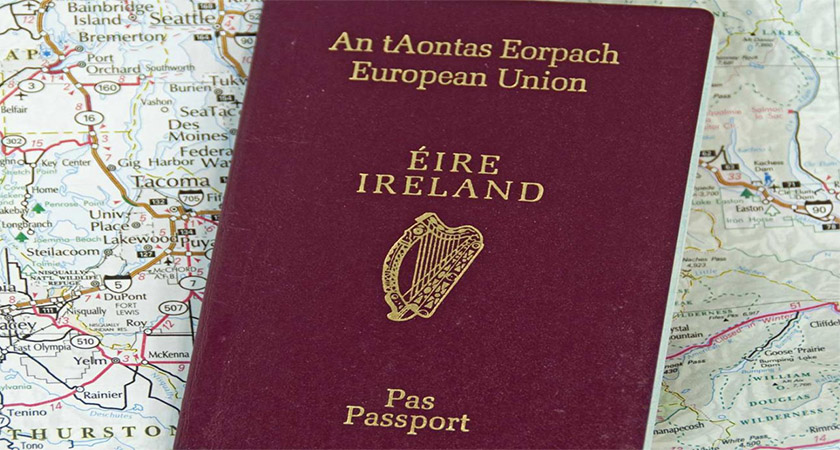
Complete Guide to Irish Visas: Categories, Application Steps, and Common Questions
If you’re planning a visit to the Emerald Isle, whether for tourism, business, or a longer stay, you may need an Ireland visa. This guide will help you understand the types of Irish visas available, how to apply, and what to do if your visa application is denied.
Understanding Ireland’s Visa Policy
Ireland’s visa requirements depend on your nationality and can be categorized into three groups :
- EU/EEA Nationals : If you’re a citizen of an EU or EEA country, you can enter Ireland with just your passport or national identity card for up to three months. No visa is required, and there’s no need to register with immigration authorities upon arrival.
- Non-EU/EEA Nationals Exempt from Visas : Nationals from certain countries that have a visa-free agreement with Ireland do not need a visa. However, you must still register with immigration authorities at the border, where an Immigration Officer will determine your entry.
- Non-EU/EEA Nationals Subject to Visas : If your country is not exempt, you’ll need an Irish visa. This visa permits you to travel to Ireland, but final entry and stay approval are at the discretion of immigration officers upon arrival.
Types of Irish Visas
Irish visas are categorized based on the purpose and duration of your stay :
- Short-Stay Visas (C Visa) : For trips lasting less than three months. Types include :
– Visitor Visa : Designed for travel aimed at exploring and sightseeing.
– Business Visa : For business meetings and related activities.
– Employment Visa : For short-term employment under the Atypical Working Scheme.
– Stage Performance/Tournament Visa : For artists or athletes performing or competing.
– Training Visa : For short-term training courses.
– Internship Visa : For paid internships up to three months.
– Medical Treatment Visa : For medical procedures in Ireland.
– Join a Ship Visa : For joining a ship within 24 hours of arrival.
– Marriage Visa : For marrying in Ireland with prior acknowledgment from the Registrar of Civil Marriages.
– Exam Visa : For sitting exams in Ireland.
- Long-Stay Visas (D Visa) : For stays over three months. Types include :
– Study Visa : For studying at an Irish educational institution.
– Employment Visa : Required for working in Ireland.
– Family Visa : For joining a family member residing in Ireland.
– Working Holiday Visa : For nationals from countries with a Work Holiday agreement.
– Researcher Visa : For scientific research positions.
– Extended Internship Visa : For internships lasting more than three months.
– Volunteer Visa : For working as a volunteer.
– Minister of Religion Visa : For religious activities.
– Retirement Visa : For financially self-sufficient retirees.
- Transit Visa : Required for travelers from specific countries who need to change transport at Irish airports or seaports without passing through border control.
Single vs. Multiple-Entry Visas
– Single-Entry Visa : Allows one entry into Ireland. Re-entry is not permitted, even if the visa is still valid.
– Multiple-Entry Visa: Allows several entries within the visa’s validity timeframe. It is usually granted to frequent travelers or those with previous visa compliance.
How to Apply for an Irish Visa
- Complete the Online Application : Use the AVATS system on the Irish Naturalisation and Immigration Service (INIS) website. After submission, you’ll receive a transaction number to track your application.
- Provide Required Information : Include details about the visa type, purpose of travel, passport information, and personal details. You must also declare any prior visa applications or refusals.
Additionally, you can connect with check Ireland Visa for Indians in order to know more
- Print and Submit the Application : After completing the online form, print a copy and submit it along with your passport and supporting documents. The submission location depends on your country and could be an Irish embassy, consulate, or visa application center.
- Biometrics : You may need to provide biometric data, such as fingerprints and photographs, at the submission location.
- Visa Processing Time : Typically takes about eight weeks but may vary. Submit your application well before your planned departure.
Border Control and Entry
Even with a visa, entry to Ireland is determined by border control officers. You must present your passport, visa, and documents submitted with your application.
Handling Visa Refusals
If your application is denied, you’ll receive a refusal letter explaining the reason. You can appeal this decision within two months by:
– Writing an Appeal Letter : Include your transaction number, personal details, and a detailed explanation of why the refusal was incorrect. Attach any supporting documents.
– Submitting the Appeal : Send the appeal to the address provided in your refusal letter. If multiple appeals are being submitted, separate them by applicant in smaller envelopes within a larger one.
– Representation : If you’re over 18, you can submit the appeal yourself. If under 18, a parent or guardian must submit it on your behalf.
Traveling to Northern Ireland
An Irish visa does not allow entry into Northern Ireland, which is part of the UK. For travel to Northern Ireland, you need a UK visa, though some travelers from countries under the British-Irish Visa Scheme may use an Irish visa.
By understanding these guidelines and preparing thoroughly, you can navigate the Ireland visa process with confidence.